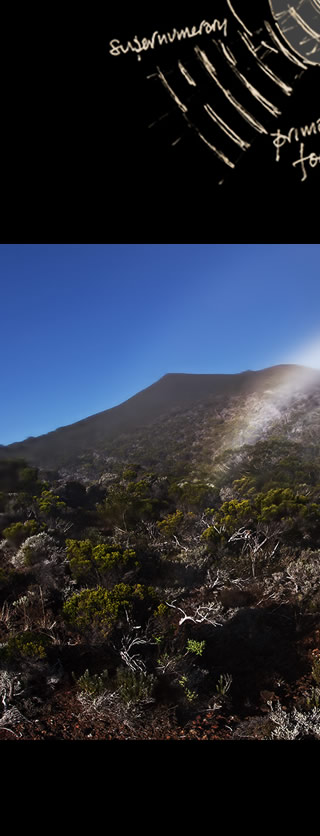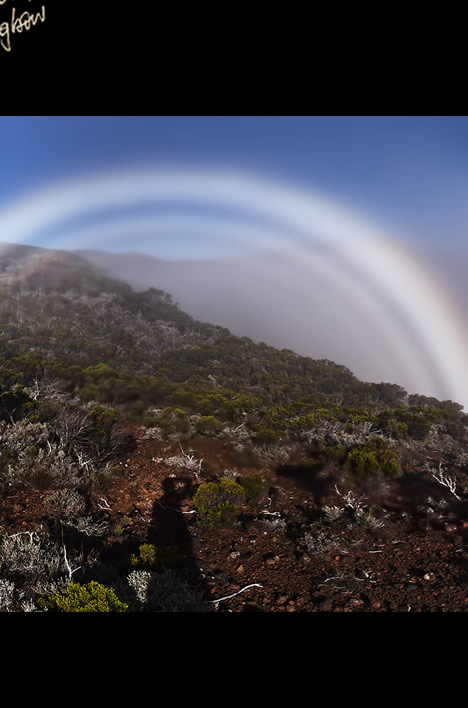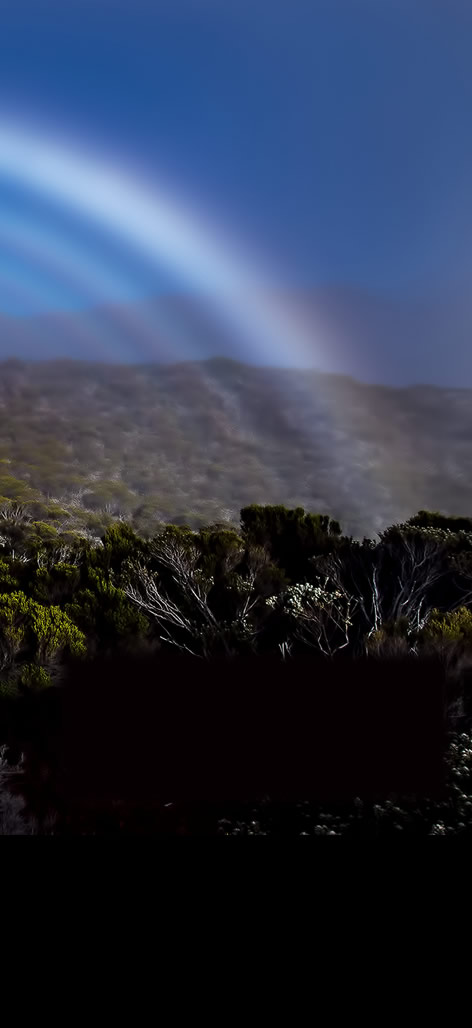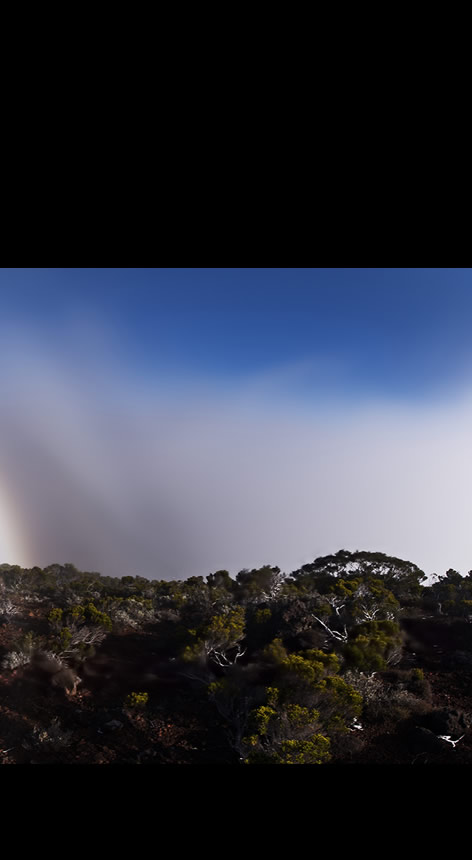Fogbows
Sunlight making a fogbow follows the same recipe as that for a rainbow. Light enters a water sphere, reflects once from the opposite side and leaves in several directions almost back towards the sun. The difference is that large (1-2mm diameter) raindrops give rainbows while small fog droplets (0.01 - 0.2mm diameter) produce fogbows.
The smaller droplets are only 10-100 times the size of wavelengths of visible light and wave effects are therefore significant. At each surface the light waves are scattered in many directions and these outgoing scattered waves overlap and interfere - in other parlance they are diffracted. The result is a broad and diffuse circle of light rather than the sharper rainbow. However, rainbows themselves are not innocent of diffraction effects - witness their supernumerary fringes.
Supernumerary fringes
Mixing (badly!) ray and wave optics, for any one deflection angle there are two possible ray paths through the drop. Now think of each of those ray paths as carrying waves. The two waves have different path lengths. When they overlap and interfere some directions reinforce, in others the waves cancel. The result - supernumerary fringes.
The fringe spacing depends on droplet size and when there is a range of sizes the fringes get washed out. here the droplets must have had closely similar sizes.
|











